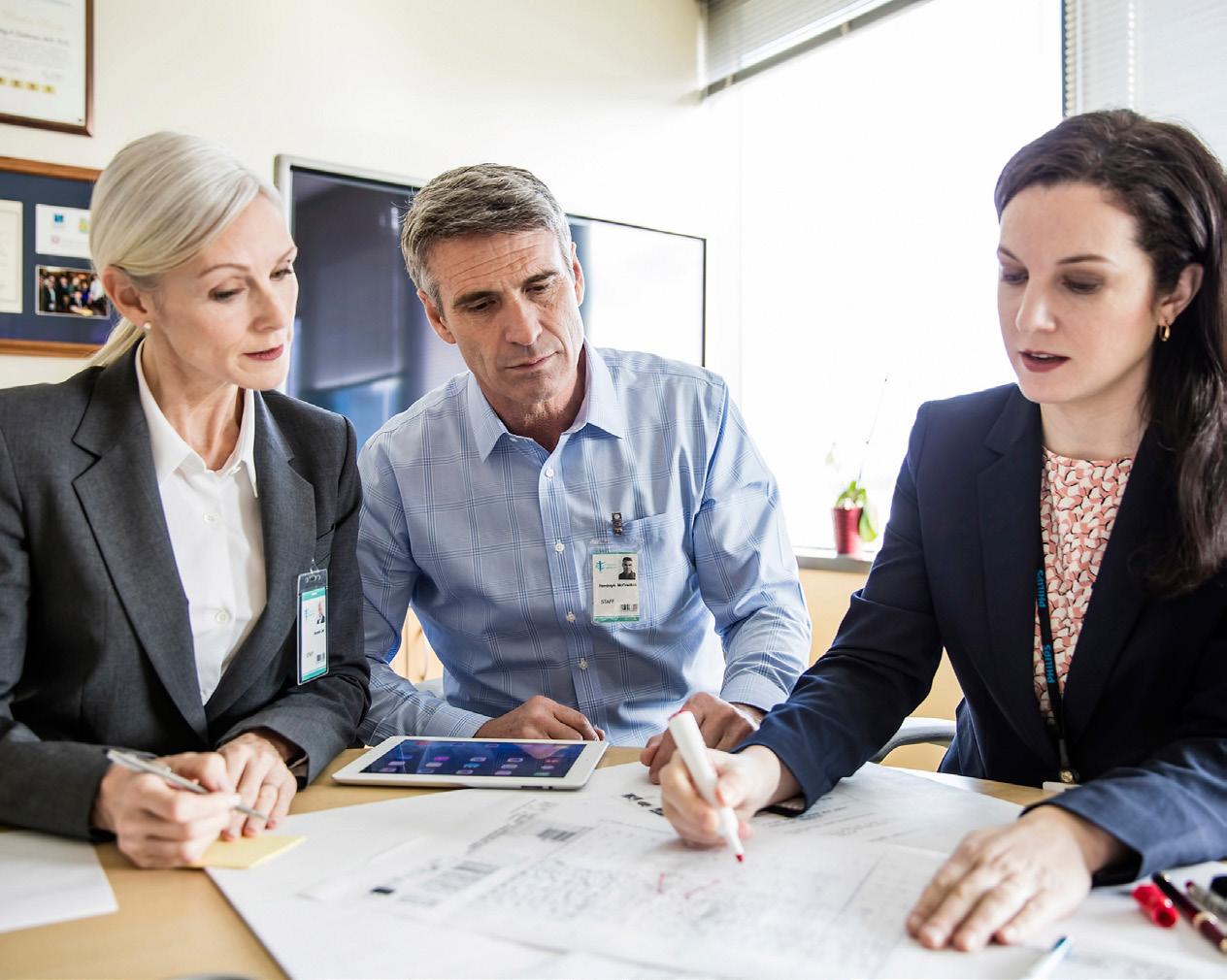




DIGITAL REPORT 2022 IN ASSOCIATION WITH: Driving strategic ideation end-toend into execution together with strategic partners to fulfil purpose at Philips


DRIVING STRATEGIC IDEATION END -TO - END INTO EXECUTION TOGETHER WITH STRATEGIC PARTNERS TO FULFIL PURPOSE AT PHILIPS 2 philips.com

philips.com 3 ROYAL PHILIPS
 Scott Schwartz: Chief Procurement Officer & Head of Sustaining Engineering, Royal Philips
Scott Schwartz: Chief Procurement Officer & Head of Sustaining Engineering, Royal Philips
4 philips.com
There can be few better opportunities to learn about your products and your customers than seeing them in action in the hospital or clinic. Scott Schwartz from Philips recently had that opportunity at a hospital appointment, where he saw the global health technology company’s ultrasound systems being used first hand. As Chief Procurement Officer and Head of Sustaining Engineering at Royal Philips, he knows all too well how important their products are to people all over the world.
“The beauty of what we do here is that we make products and solutions which have a direct connection to our family and friends. Our products help them and other people around the globe improve or save their lives. That’s really inspiring and has motivated me throughout my career in medtech,” says Scott, who has been recently appointed
as Chief Procurement Officer at Philips, in addition to his Sustaining Engineering Lead responsibility. “We help improve the workflows in hospitals, lower the cost of care and have a direct impact on society. That greatly contributes to my job satisfaction: it's all about helping people and improving their life and wellbeing. At some point of our life, we are exposed to our own products either ourselves or our family members, friends or colleagues are. That makes our task very real and puts a face to it.”
This purpose-driven motivation is what Scott also likes to drive into his own team. He was able to build a purpose-driven, high-performance team that understands the impact Philips’ products and solutions have on the end user. Driving strategic ideation into a strong rigour in execution is a valuable mantra for success.
“The key here is that, first, you have really talented, creative people that are always curious to dig deeper, to dig for more – and I think that's the culture that we are trying to create here, that rigour, that depth, that curiosity to find more,” he says. “That is the foundation of trying to find these improvement ideas.”
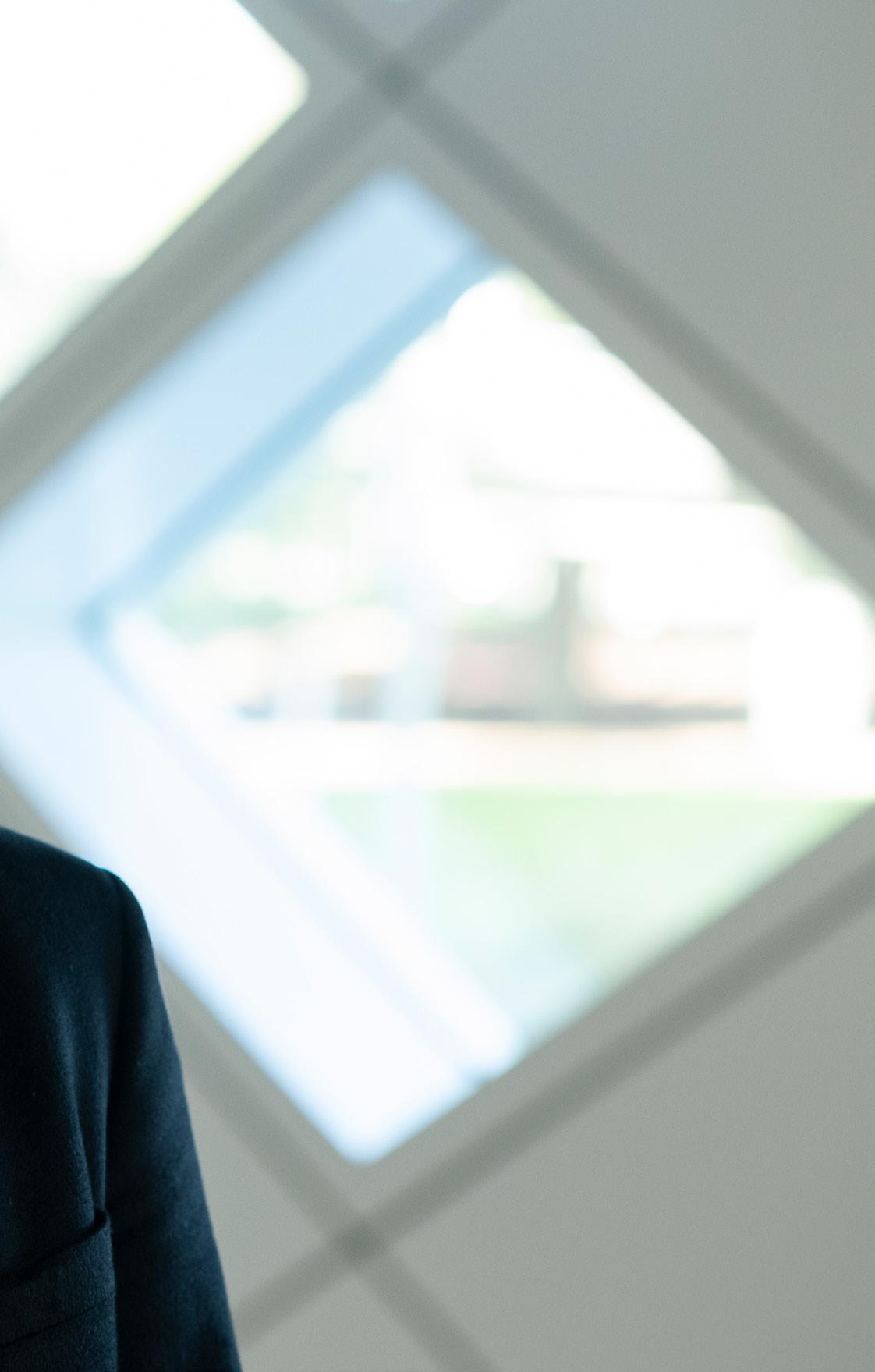
As Chief Procurement Officer and Head of Sustaining Engineering at Philips, Scott Schwartz highlights how an end-to-end approach to strategic ideation and drive into execution together with strategic partners helps Philips to fulfil its purpose: to improve people’s health and wellbeing through meaningful innovation, to lower the cost of care and improve the patient/customer experience.
philips.com 5 ROYAL PHILIPS
Scott is very clear on the importance of talent in his own team, but for him, the team doesn’t end at the walls of Philips. He recognised in past company experiences how important it is to team up with strategic partners in the value chain to do things first time right and avoid higher costs in later product lifecycle stages. It is therefore important for Philips to share their purpose as well with their strategic suppliers and connect them to the outcomes desired for the customers and patients.
“I think it's really valuable to hear different users talk about your products,” he says. “A lot of times, what you believe they're going to say is not actually what they end up saying. For me, it was really insightful to talk to the technician because you are thinking they are going to talk a lot about the actual diagnostics, the clarity of the imagery and the quickness of the machine, which are things we are driving
at the company. But instead, a lot of times you end up hearing about the basic ergonomics and usability of the machine. It's important to see that there is more to the overall satisfaction of the customer than just the traditional features you are driving.”
Scott explains that having the customer’s point-of-view helps in ensuring that they are providing market-leading technology that makes a tangible difference to the lives of both patients as well as the healthcare professionals using the equipment.
“We're making these products to help people; real people and real faces are using our products. So that purpose, that responsibility, is constantly reinforced in the organisation and I'm trying to continually implement this outside-in view in the organisation. We want everybody thinking outside-in. What does this product do, and as I understand what it does, how do I improve that?”

6 philips.com ROYAL PHILIPS
Scott Schwartz
TITLE: CHIEF PROCUREMENT OFFICER AND HEAD OF SUSTAINING ENGINEERING COMPANY: ROYAL PHILIPS INDUSTRY: HEALTHCARE, PROCUREMENT, ENGINEERING
Scott Schwartz is currently the Chief Procurement Officer and Head of Sustaining Engineering. He is responsible for the execution of the E2E Procurement & Supplier Management strategies from New Product Development to Life Cycle Management to support key business strategies across all business groups of Royal Philips. The Procurement & Engineering team have a strong engagement in Advanced Development & New Product Development connecting the supplier ecosystem to drive innovation, productivity and quality. In addition, he is responsible for the sustaining engineering team for the Supply Chain & Operations group driving continuous improvement on the marketed products. The Procurement & Engineering team links the Commodity Strategies to the Business Strategies creating local impact and global leverage. Scott joined Philips in 2014 as the Head of Procurement Engineering for the Philips Healthcare businesses.
Prior to Philips, Scott worked for Boston Scientific for 18 years where he held leadership roles in Product Development, Process Development, General Management and Procurement. Prior to Boston Scientific, Scott started his career at 3M Company as a product/ process development engineer.
Scott has a BS in Mechanical Engineering from MIT, a MS in Mechanical Engineering (Statistics Minor) from University of Minnesota, and a MBA from the Carlson School at the University of Minnesota.
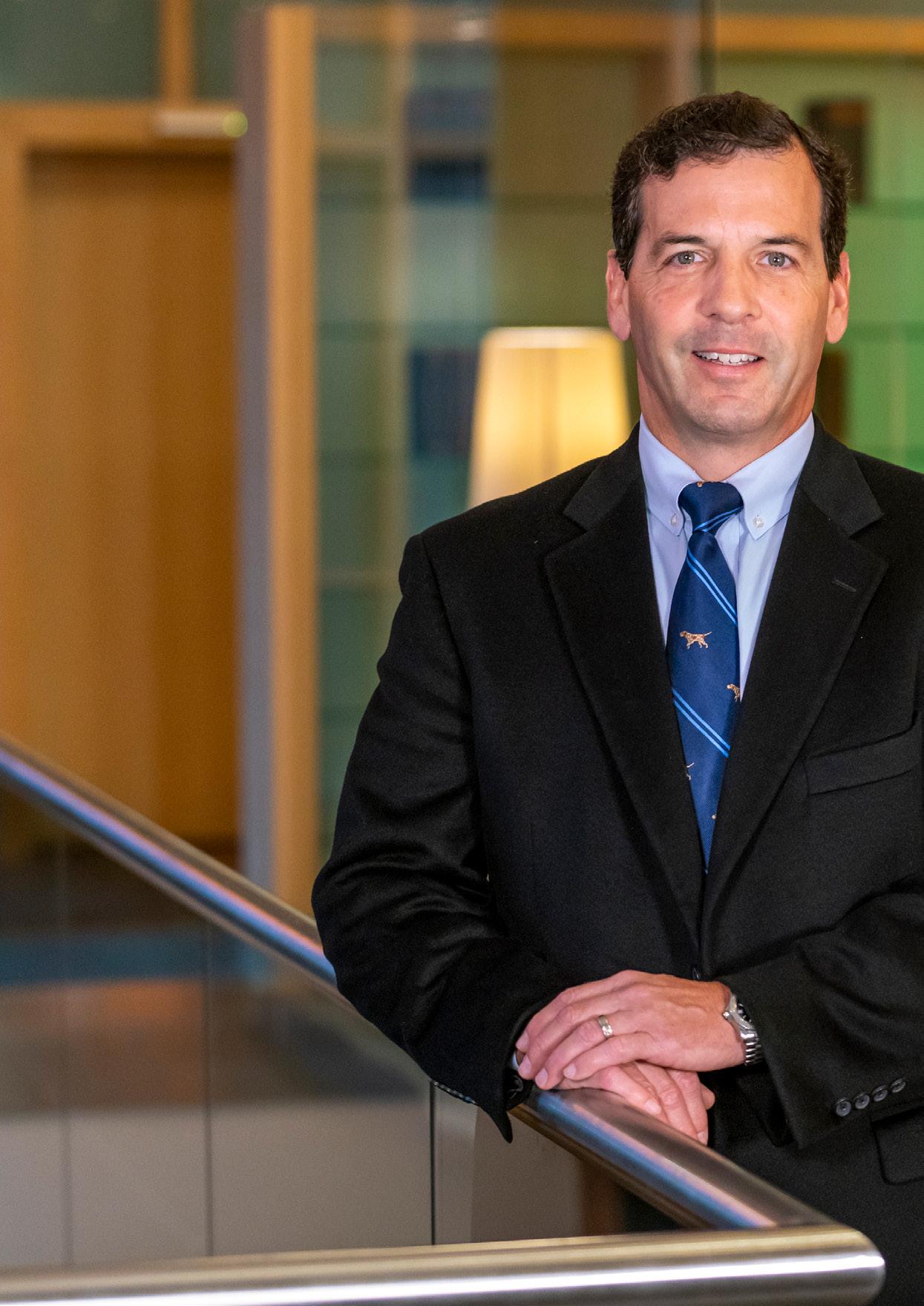
EXECUTIVE BIO philips.com 7
Lasting relationships. Global success.
Customized Medical Manufacturing Capabilities
We understand medical customers. Since 1999, Kimball Electronics has served the medical market, manufacturing millions of medical devices, medical electronic assemblies, and complex full medical devices. By leveraging our focused medical core competencies, decades of experience, and customer-aligned global footprint, we’re ‘Creating Quality for Life’.
Learn more about how Kimball Electronics is ‘Creating Quality for Life’ for our medical industry customers. Learn more




Kimball Electronics’ is prepared for the new normal.
Kimball Electronics used the pandemic to bring its global facilities closer together to build life-saving equipment around the world for the new normal.
The electronics manufacturing company, Kimball Electronics, is expanding, despite the global supply chain crisis, and the new normal. Steve Korn, the President of Global EMS Operations, is ready.
“I’m responsible for all the manufacturing of those facilities, as well as our global supply chain and an IT team, as well as a finance team that supports those operations.”

There are a lot of people reporting to Korn and he knows each of them is a vital employee. “Our people are critical to us and that’s what separates us from our competitors,” says Korn. “We spend time making sure that we have the best work environment we can have.”
Manufacturing highly-reliable products at Kimball Electronics
Kimball Electronics manufactures electronics for products across several markets, including automotive, industrial, medical, and public safety.


“It’s really exciting working across those different industries,” says Korn. “The number one thing for us is in each one of those industries, we manufacture very reliable products. If you’re going to a
hospital and you have an AED device or a monitoring device or a ventilator, the last thing you would want is for it not to work.”
Building medical equipment with a focus on critical, life-saving needs
As Kimball Electronics manufactures for the medical and public safety markets, the company has adapted over the pandemic.
“I think a couple things changed us, such as supporting our medical customers,” says Korn. “We did a lot of work for Phillips in building ventilators and building BIPAP equipment, it really helped us focus more into the medical space and public safety.”
Over the pandemic, Korn has had the time to develop professional skills. “I have continued to improve my communication skills — for how to develop communicating virtually and in writing.” Virtually or officebased, Kimball Electronics is ready for the new normal.
more
Learn
SCOTT SCHWARTZ CHIEF PROCUREMENT OFFICER & HEAD OF SUSTAINING ENGINEERING, ROYAL PHILIPS
The sector comes with a degree of public responsibility, and, as someone who has worked in medtech for the vast majority of their career, Scott says it is something with which you foster a deep connection.
“I wouldn't go anywhere else or to any other sector because the beauty of what we do here is that we make products and solutions which have a direct connection to our family and friends.” Scott’s route to Philips has taken him across different business roles since completing a mechanical engineering degree at MIT. The first career step was to 3M Company
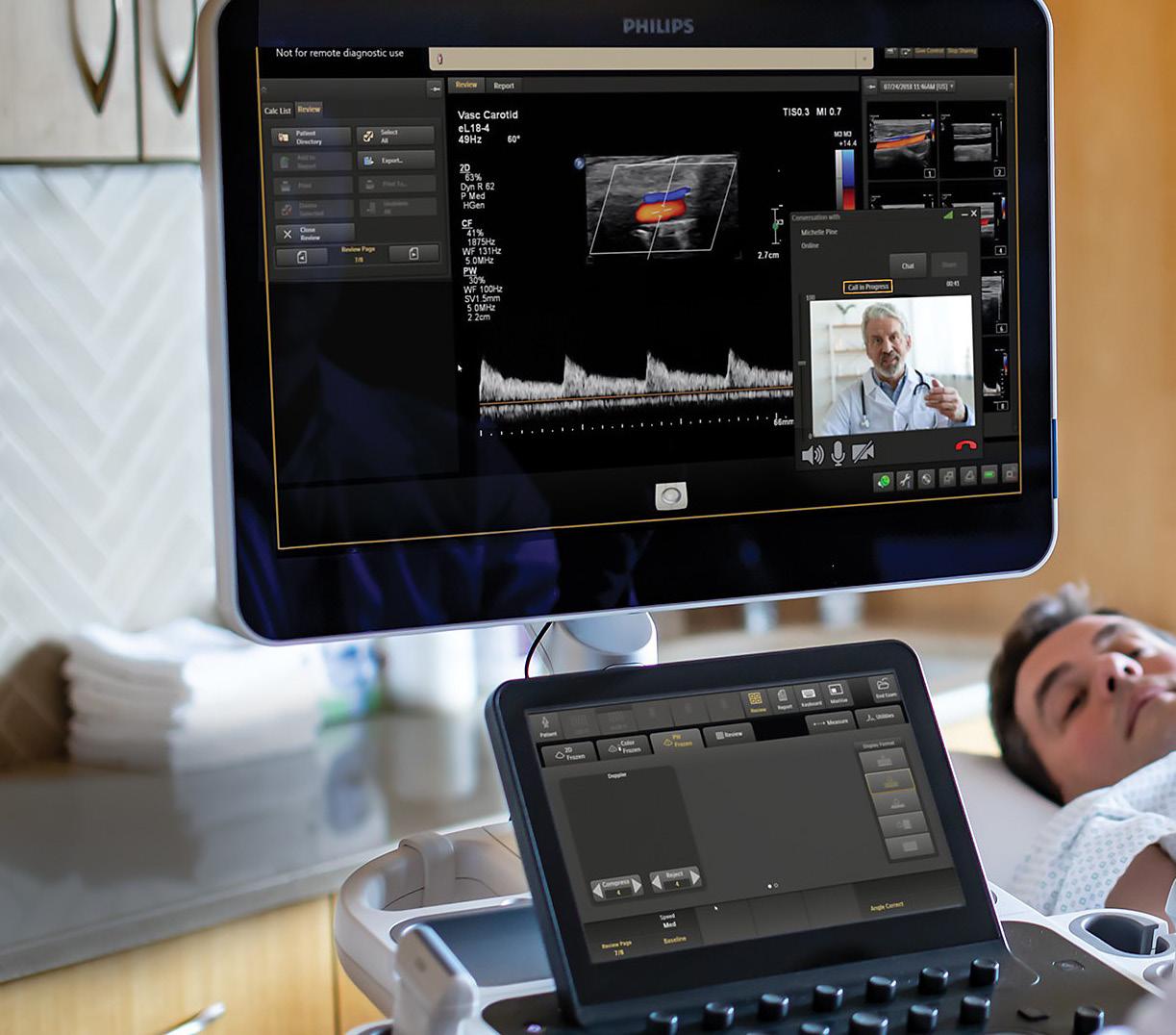
“We want everybody thinking outside-in. What does this product do, and, as I understand what it does, how do I improve that?”
10 philips.com
after graduating. He completed a Master’s degree in mechanical engineering and an MBA at the University of Minnesota. Scott says that his goal was always to be a leader of technical people, so he needed to be sure his technical capability was strong to have credibility in an engineering environment, but also having the MBA to bring a broader business view to the table. He then spent eighteen years at Boston Scientific working across product development and supplier engineering, providing him a wide scope of experience to manage products from endto-end during their development.
Scott believes the structure at Philips
Procurement and Sustaining Engineering is one of their key strengths, as it allows them to have more of an end-to-end overview of products, from inception to delivery. As well as the traditional procurement responsibilities that fall under his responsibility, there is also an engineering arm connected directly to procurement, which allows them to drive the overall strategy through partnerships with their supplier base.
“It’s a unique combination compared to most other procurement organisations that you would typically see,” he says. “We are also heavily involved in new product

philips.com 11 ROYAL PHILIPS

























THE GLOBAL INTEGRATED MANUFACTURING SPECIALISTS World-Class Quality | Global Footprint | Scale Learn More
Paul Bullock, European COO, Volex
Made up of 8,000 people, in 19 factories, across three continents, “Volex’s global footprint is unparalleled in our industry,” says Paul Bullock, COO Europe, Volex.

Since 2004, Volex has been supplying Philips with its services. “We started providing cables for their defibrillator products,” says Bullock. “Over the last 18 years, that relationship has grown to be a global strategic partnership, underpinned by three pillars: exceptional quality, global footprint, and scale.”
Exceptional quality
“We have seven factories right now that are approved to the ISO 13485 medical standard, and recently, with Philips’ promotion and support, our Tijuana, Mexico factory was able to achieve MedAccred accreditation, becoming the first cable and wire harness accredited supplier in the whole of Mexico, which was a fantastic achievement,” says Bullock.
Global footprint
Committed to reducing lead times, increasing their market reach, and getting closer to the end customer, local supply and regionalisation of supply chains is becoming increasingly important for Philips.
“Soon we will be supplying Philips from eight locations, with the addition of India.
Volex will be investing in a new factory in the Pune region, close to Philips, supporting the company’s localisation efforts for their supply chain and facilitating their growth plans for the region,” says Bullock.
Scale
The scale of Volex affords its customers like Philips to have the confidence that they are working with a global supplier with a worldwide partner ecosystem and global experience. “Volex currently supplies Philips with over 2,200 part numbers, that contain 6,000 raw materials into 20 different Philips locations, which is a huge portfolio of parts with a huge amount of complexity,” says Bullock.
“We manage that expansive portfolio by engaging closely with Philips at a local, regional, and global level through our factory teams, and the executive team, to give Philips the confidence in the quality delivery and service that they’re getting at multiple touch points.” adds Bullock.
“As Philips continues to develop its lifesaving products, Volex will be there as a trusted global integrated manufacturing partner,” concluded Bullock.
Learn More
development – which I think is common with other procurement organisations – but we are doing it at an even more technical level, partnering with the R&D organisation and getting involved very early in that new product innovation cycle.”

This set up allows Philips to accelerate the strategic execution and drive strategic initiatives from the Procurement perspective, whether that is supply base mobilisation, innovation, cost down and quality up activities. Projects focused on quality, productivity, resilience, or innovation can be driven with great speed in partnership with the supply base. This makes supplier performance management truly end to
SCOTT SCHWARTZ CHIEF PROCUREMENT OFFICER & HEAD OF SUSTAINING ENGINEERING, ROYAL PHILIPS
end. It is much faster and more efficient to have the needed resources in one team. By having the internal team joining forces with strategic suppliers, Scott aims to foster a culture of collaborative disruption to drive into fast, customer-oriented outcomes.
Scott has been at Philips through a time of transformation, as it pivoted further into a health technology company, which now is one of the world’s largest health technology companies. It has been a long journey for a company that started in 1891 with its namesake, Frederik Philips and his son Gerard, producing electrical lighting products in an Eindhoven factory before diversifying into home appliances.
“It is key to have these smaller sets of suppliers that are more strategic as we interact with them”
14 philips.com ROYAL PHILIPS

philips.com 15
WE ARE NOT AN EMS PROVIDER WE ARE A SOLUTION PARTNER






At USI, we deliver global projects within local supports. We bring up the possibility of miniaturiza�on and provide diverse solu�ons from wireless communica�on to medical devices. Most importantly, we share the same values with you.



ww w.usiglobal.com Learn More
“When I first arrived at Philips, it was basically a conglomerate with a healthcare technology business, the heritage lighting business, personal health and a domestic appliances business. Over those eight years, we've actually transformed pretty impressively in such a short time into a truly health technology company – so, spinning off our lighting business, divesting our domestic appliance business and then creating one of the largest health technology companies in the world.”
“The industry needs to transform from working on hardware alone to driving cost reductions, simplicity in workflow, and improved outcomes for patients. To achieve those ambitious goals, you have to bundle technologies, bring hardware and software together to create solutions that truly solve problems. This requires the procurement organisation to transform as well. It is not about hardware alone anymore. It is about bringing in suppliers that help with the innovation on those solutions which is easier to say but not so easy to be done. Driving innovation on hardware is a little bit more concrete than driving ideation on a solution
that is not easy to conceptualise and requires a lot of pieces to be put together, and that is the challenge we face: how do you bundle solutions that truly improve outcomes, reduce costs and improve the workflow in clinics and hospitals?”
A vital part of that transformation has been the relationship Philips has with their partners and suppliers, which Scott and his colleagues are leveraging to deliver more solutions that improve outcomes, reduce costs, and optimise workflows in clinics and hospitals.
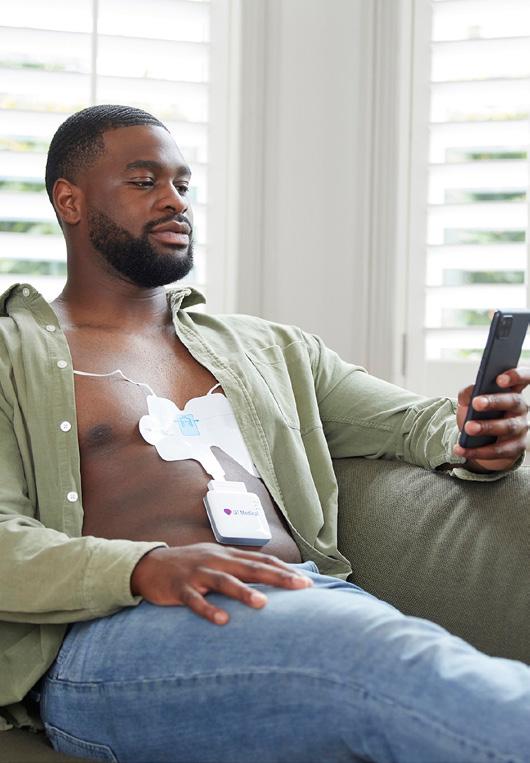 SCOTT SCHWARTZ CHIEF PROCUREMENT OFFICER & HEAD OF SUSTAINING ENGINEERING, ROYAL PHILIPS
SCOTT SCHWARTZ CHIEF PROCUREMENT OFFICER & HEAD OF SUSTAINING ENGINEERING, ROYAL PHILIPS
“Having a strong partnership with our suppliers is crucial, allowing us to connect the suppliers to our problems, thus connecting the supplier innovation capabilities to our problems, to actually leverage a much broader ecosystem to identify these step-up improvements.”
“The culture that we are trying to create here is that rigour, that depth, that curiosity to find more”
philips.com 17 ROYAL PHILIPS
SCOTT SCHWARTZ CHIEF PROCUREMENT OFFICER & HEAD OF SUSTAINING ENGINEERING, ROYAL PHILIPS
By using an early engagement approach with their suppliers, Scott believes it gives them the best possible chance of delivering solutions and step-up improvements to their products, and, with his role having a larger overview of development, it can bring the best out of those partnerships.
“Everybody thinks that every procurement leader says, ‘We are going to leverage the supplier ecosystem and bring the suppliers closer to our activity’. It’s easy to talk about the concept, but it's very hard to do in practice. We have done some of the structural things, like consolidating our supply base to strategic suppliers that have strategies and visions lined up with Philips’
strategy and vision. I think that it is key to have these smaller sets of suppliers that are more strategic as we interact with them.”
It is this culture of trusted collaborations embedded in these partnerships that allows a stronger bond between the two for the benefit of both parties, and, ultimately, for the customers and patients who use the technology. Scott is confident that the company’s top strategic partners feel listened to and empowered to play an active role in the process of product development.
“That's the key – that it’s a two-way street,” he says. “They are partners and so we have confidence in them, but it's also our responsibility to treat them like strategic
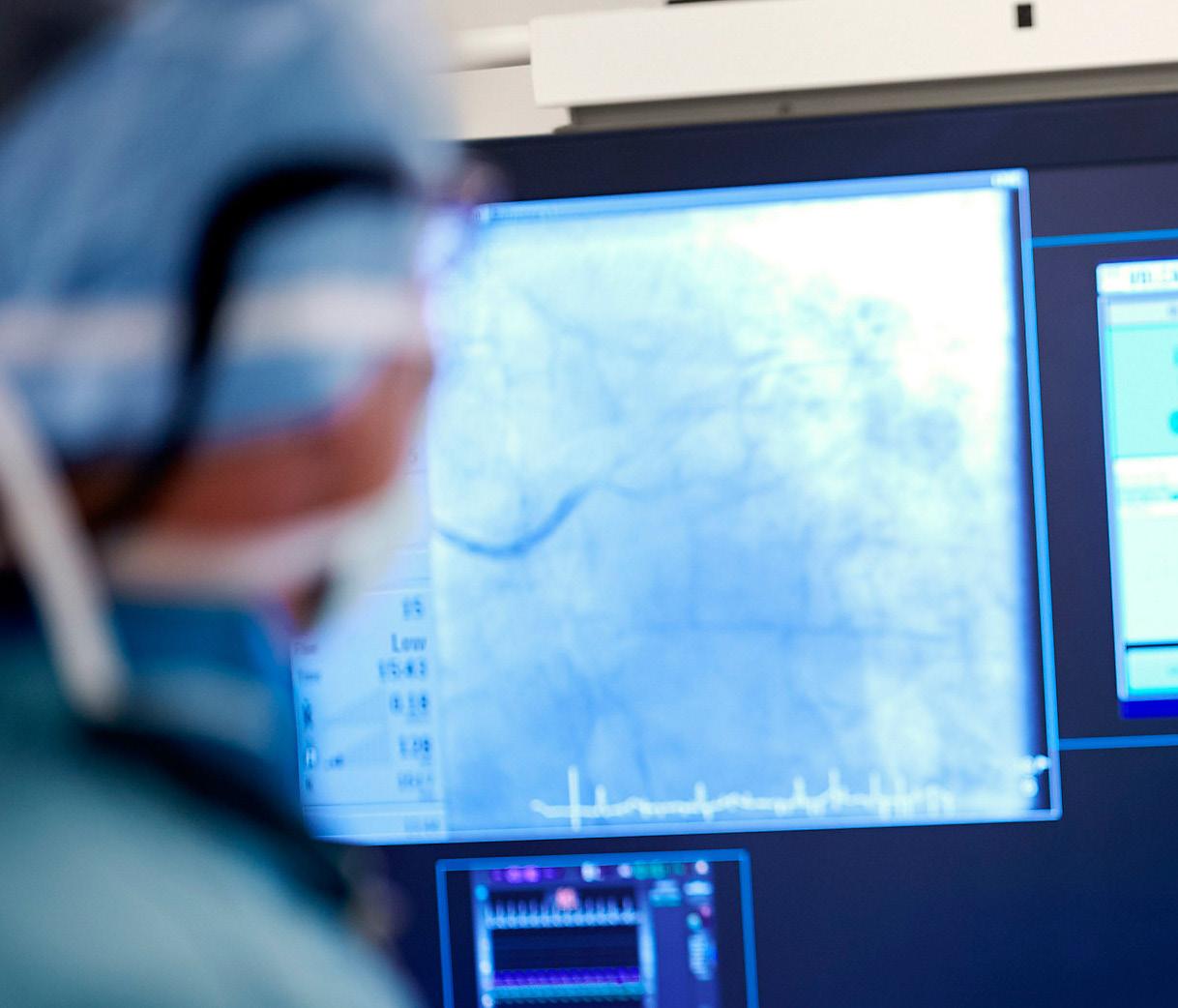
“What is really inspiring about this whole industry is that we are helping people”
18 philips.com ROYAL PHILIPS
partners and give them benefits for being our strategic partners. Whether that is access to our new product development opportunities or focusing on other creative innovations that we are working on, we want them to feel part of Philips.”
Scott also says that they strive to make sure there is a flow of communication and innovation coming from their suppliers for productivity, quality, performance, and resilience. That is the benefit of connecting a strong procurement organisation with a sustaining engineering capability to drive execution.
All those ideas permeate through product development cycle to the consulting
rooms, clinics and wards of hospitals and clinics around the world. It was following his appointment that Scott got to witness the benefits of that approach first hand and see staff interacting with their innovations.
‘It was just very insightful to talk to the technician and ask him about Philips and our products – that is what it's all about. Not only the connectivity to the personal experience you have with our products, but also seeing that our products are perceived as delivering on their high-quality premise. And that's satisfying as well.”
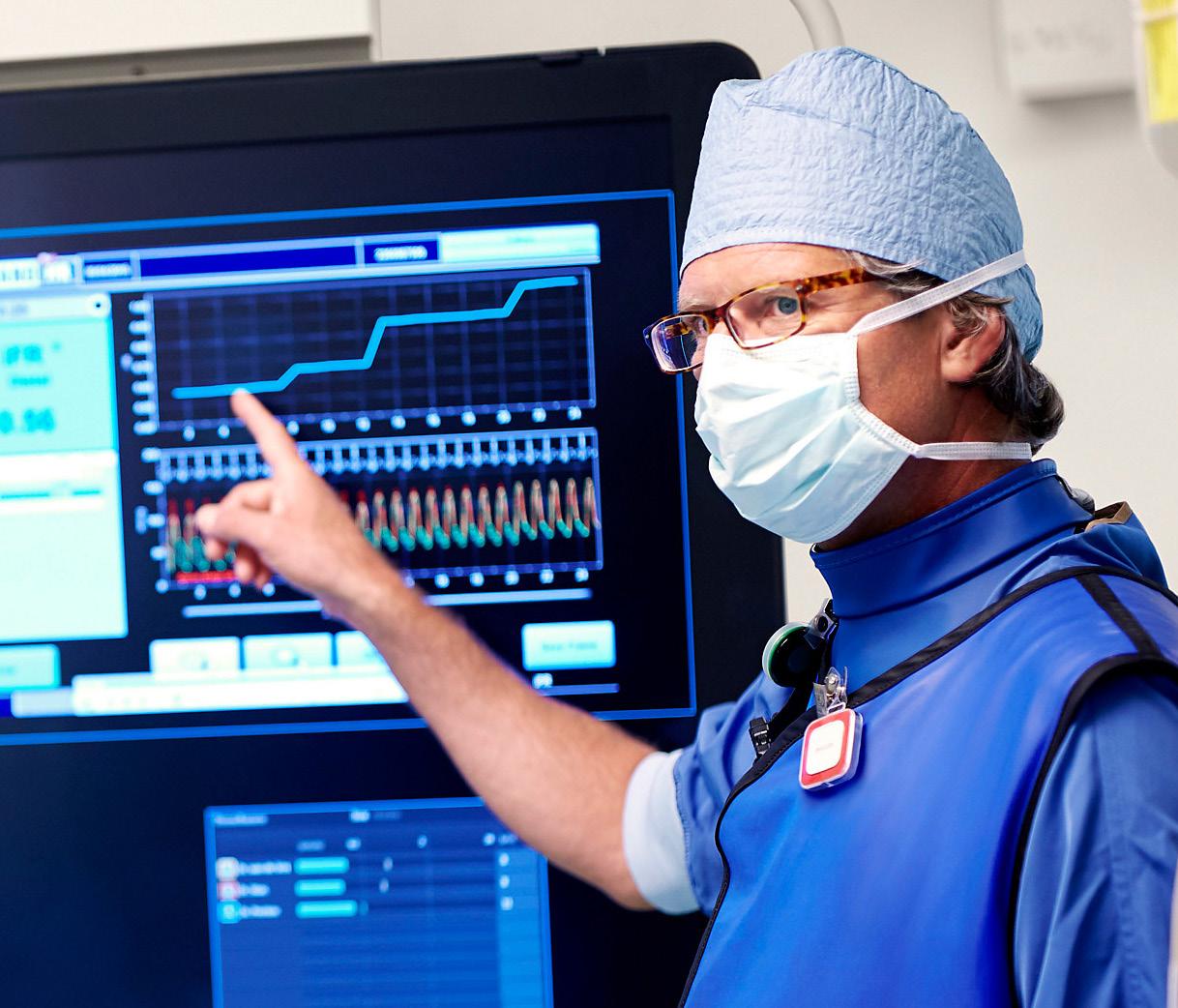
philips.com 19
BY:


www.philips.com POWERED








 Scott Schwartz: Chief Procurement Officer & Head of Sustaining Engineering, Royal Philips
Scott Schwartz: Chief Procurement Officer & Head of Sustaining Engineering, Royal Philips
























 SCOTT SCHWARTZ CHIEF PROCUREMENT OFFICER & HEAD OF SUSTAINING ENGINEERING, ROYAL PHILIPS
SCOTT SCHWARTZ CHIEF PROCUREMENT OFFICER & HEAD OF SUSTAINING ENGINEERING, ROYAL PHILIPS



